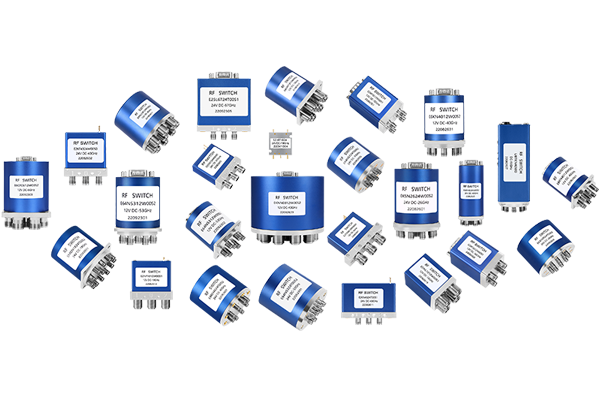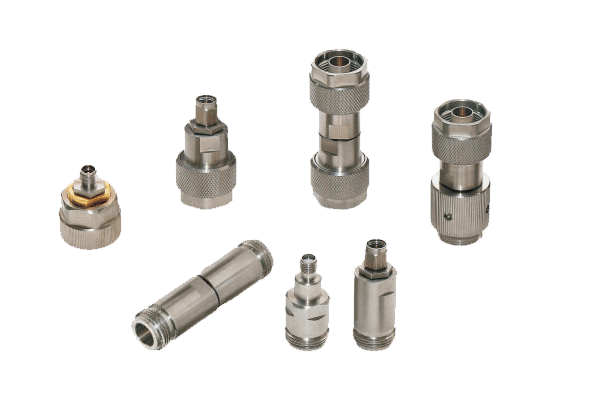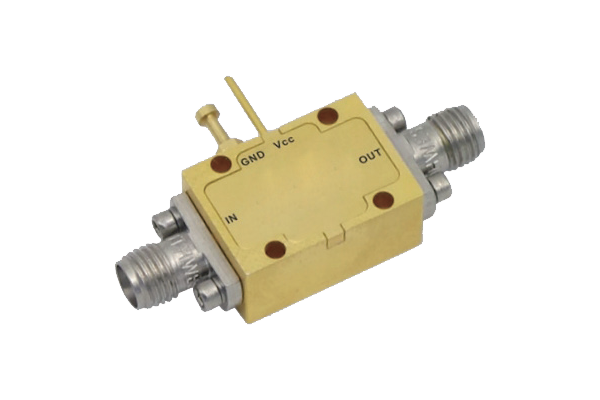
Pin diodes now serve as significant elements in high-bandwidth applications owing to their fundamental material and electrical qualities Their quick conductive to nonconductive switching and compact capacitance with limited insertion loss make them perfect for switches modulators and attenuators. The underlying principle of PIN diode switching involves controlling charge flow through the junction by biasing the device. The bias voltage changes the junction depletion width which in turn influences the device conductance. By varying the bias level PIN diodes can be reliably switched to operate at high frequencies with low distortion
In systems that require precise timing and control PIN diodes are commonly integrated into sophisticated circuit topologies They can function inside RF filters to permit or attenuate targeted frequency bands. Moreover their high-power handling capability renders them suitable for use in amplification division and signal generation stages. The trend toward miniaturized highly efficient PIN diodes has broadened their applicability in modern technologies like wireless communications and radar
Evaluating Coaxial Switch Design and Functionality
Coaxial switch engineering is a complex undertaking requiring careful attention to multiple interacting factors Key factors such as switch category operating band and insertion loss shape the coaxial switch performance. Optimal coaxial switches balance reduced insertion loss with enhanced isolation between connections
Performance assessment centers on return loss insertion loss and port isolation metrics. Metrics are assessed using simulation tools theoretical modeling and laboratory measurements. Rigorous performance analysis is necessary to secure dependable coaxial switch operation
- Analytical methods simulation packages and experimental testing are standard approaches to coaxial switch analysis
- The behavior of a coaxial switch can be heavily influenced by temperature impedance mismatch and manufacturing tolerances
- Contemporary advances and emerging developments in coaxial switch engineering seek improved metrics with smaller size and reduced power
Optimizing Low Noise Amplifier Architectures
Optimizing the LNA’s gain efficiency and operational performance is central to maintaining signal integrity This requires careful selection of transistors bias conditions and circuit topology. A robust LNA layout minimizes noise inputs while maximizing amplification with low distortion. Simulation based analysis is critical to understand design impacts on LNA noise performance. Reducing the Noise Figure remains the design target to ensure strong signal retention with minimal added noise
- Device choice focusing on minimal intrinsic noise characteristics is paramount
- Optimal proper and suitable bias conditions are necessary to limit noise generation in transistors
- Circuit layout and topology have substantial impact on noise characteristics
Employing matching networks noise suppression and feedback systems refines LNA performance
Pin Diode Switch Based Signal Routing

PIN diode based routing offers versatile efficient control of RF signal paths These semiconductors can be rapidly switched on or off allowing dynamic path control. Key benefits include minimal insertion loss and strong isolation to limit signal deterioration during switching. Typical applications include antenna switching duplexing and RF phased arrays
Operation relies on changing the device resistance via applied control voltage to switch paths. When off or deactivated the diode exhibits high resistance effectively blocking RF energy. When a positive control voltage is applied the diode resistance decreases reduces or falls allowing RF signals to pass
- Furthermore PIN diode switches boast speedy switching low power consumption and small size
Multiple configurable architectures and design schemes of PIN diode switches facilitate complex routing operations. Strategic interconnection of many switches yields configurable switching matrices for versatile path routing
Measuring the Performance of Coaxial Microwave Switches

Detailed assessment and testing validate coaxial microwave switches for optimal function across electronic systems. Multiple determinants including insertion reflection transmission loss isolation switching speed and operating bandwidth shape performance. A full evaluation process measures these characteristics under various operating environmental and test conditions
- Moreover additionally furthermore the evaluation ought to include reliability robustness durability and environmental tolerance considerations
- Finally the result of robust evaluation gives key valuable essential data for choosing designing and optimizing switches to meet specific requirements
Review of Techniques to Reduce Noise in Low Noise Amplifiers
LNAs serve essential roles in wireless RF systems by amplifying weak signals and curbing noise. The review supplies a broad examination analysis and overview of methods to diminish noise in LNAs. We examine explore and discuss primary noise origins such as thermal shot and flicker noise. We examine noise matching feedback loop designs and bias optimization techniques for noise mitigation. The review underlines recent breakthroughs like innovative materials and circuit architectures that achieve lower noise figures. Providing comprehensive insight into noise management principles and approaches the article benefits researchers and engineers in RF system development
Applications of Pin Diodes in High Speed Switching Systems

They show unique remarkable and exceptional characteristics tailored for high speed switching uses Low capacitance and low resistance contribute to very fast switching enabling precise timing control in demanding applications. Further PIN diodes’ proportional response to voltage facilitates exact amplitude modulation and switching control. Their adaptable flexible and versatile nature makes them suitable applicable and appropriate for broad high speed applications Use cases cover optical communications microwave circuitry and signal processing devices and equipment
Integrated Circuit Coaxial Switch Circuit Switching Technology
Coaxial switch IC integration provides critical improvements in signal routing processing and handling inside electronic systems circuits and devices. The ICs are designed to direct manage and control coaxial signal flow offering high frequency operation and reduced propagation insertion latency. IC miniaturization supports compact efficient reliable and robust designs appropriate for dense interfacing integration and connectivity contexts
- With careful meticulous and rigorous deployment of these approaches developers can accomplish LNAs with outstanding noise performance enabling trustworthy sensitive electronics With careful meticulous and rigorous deployment of these approaches developers can accomplish LNAs with outstanding noise performance enabling trustworthy sensitive electronics By meticulously carefully and rigorously adopting these practices designers can deliver LNAs with excellent noise performance supporting reliable sensitive systems With careful meticulous and rigorous execution of these strategies designers can obtain LNAs exhibiting coaxial switch excellent noise performance for sensitive reliable systems
- IC coaxial switch uses include telecommunications data communications and wireless network systems
- Integrated coaxial switch solutions apply to aerospace defense and industrial automation sectors
- Consumer electronics audio video systems and test and measurement platforms incorporate IC coaxial switches
mmWave LNA Design Considerations and Tradeoffs

Millimeter wave LNA design must address elevated signal attenuation and stronger effects of intrinsic noise. Parasitic capacitances and inductances become major factors at mmWave demanding careful layout and parts selection. Ensuring low input mismatch and strong power gain is critical essential and important for LNA operation at mmWave. Choosing appropriate active devices like HEMTs GaAs MESFETs or InP HBTs is key to achieving low noise at mmWave bands. Further the design implementation and optimization of matching networks remains vital to achieve efficient power transfer and proper impedance matching. Consideration of package parasitics is required because they may adversely impact LNA performance at mmWave. Using low loss transmission lines and thoughtful ground plane designs is essential necessary and important for minimizing reflection and keeping high bandwidth
PIN Diode Behavior Modeling for RF Switching
PIN diodes perform as significant components elements and parts across various RF switching applications. Exact detailed and accurate characterization of these devices is essential for the design development and optimization of reliable high performance circuits. This process includes analyzing evaluating and examining the devices’ electrical voltage and current traits including resistance impedance and conductance. Additionally frequency response bandwidth tuning properties and switching speed latency or response time are assessed
Furthermore moreover additionally accurate model and simulation development for PIN diodes is vital essential and crucial for behavior prediction in RF systems. Various modeling approaches such as lumped element distributed element and SPICE models are used. Appropriate model choice depends on specific application needs and the required desired expected accuracy levels
Cutting Edge Methods for Low Noise Amplifier Design
LNA design is a critical undertaking that demands precise attention to topology and parts selection to achieve low noise. Recent emerging and novel semiconductor progress has enabled innovative groundbreaking sophisticated design approaches that reduce noise markedly.
Among the techniques are utilizing implementing and employing wideband matching networks integrating low noise high intrinsic gain transistors and refining biasing schemes strategies and approaches. Further advanced packaging approaches together with thermal management methods play a vital role in minimizing external noise contributions. Through careful meticulous and rigorous implementation of these approaches engineers can achieve LNAs with exceptional noise performance supporting sensitive reliable systems
